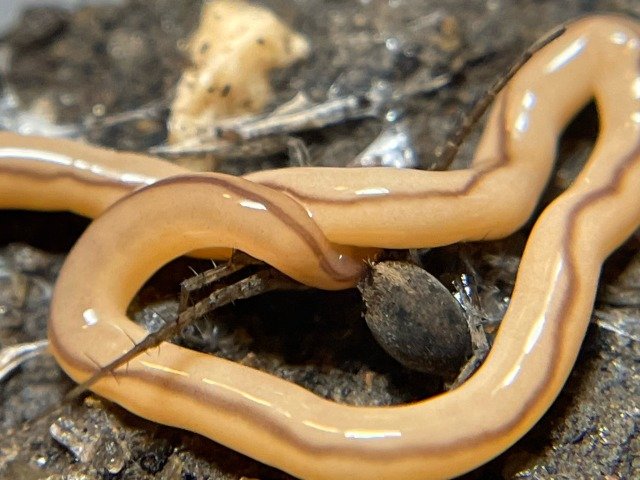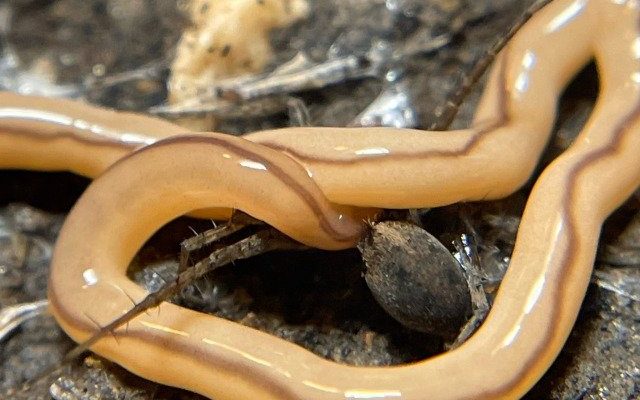
You might think of eye-spots, antennas, or even the ability to sense their environment as essential for survival. Just like we rely on our senses to navigate the world and avoid danger, ribbon worms have developed their own unique set of adaptations. You might be surprised by what they can and can’t do! Let’s dive in and explore whether ribbon worms have eyes or any sort of sensory organs, and what that means for their survival.
What Are Ribbon Worms?
To kick things off, let’s get a better idea of what ribbon worms actually are. These fascinating creatures belong to the Nemertea phylum, which makes them quite unique among invertebrates. Ribbon worms can be found in a variety of environments, from deep-sea habitats to sandy shores and freshwater streams.
They can stretch quite long—some species can reach up to 30 feet! Imagine a long, colorful ribbon undulating gracefully beneath the waves. Ribbon worms are typically soft-bodied and rely on their gelatinous structure to move quickly and efficiently through their environments. This delicate build allows them to be excellent predators, often capturing small fish and invertebrates with their specialized feeding structures.
So, why should we care about these intriguing worms? Understanding their anatomy and sensory capabilities not only adds to the knowledge of biodiversity but also sheds light on the evolutionary adaptations that allow them to thrive in various ecosystems.
Do Ribbon Worms Have Eyes?
Here’s the kicker: ribbon worms do not have eyes in the way that you or I think about them. But don’t let that fool you! Instead of traditional eyes, they possess specialized structures known as eye-spots. These tiny, light-sensitive cells can detect light and dark, which is crucial for these creatures to navigate their environments.
Now, you might be wondering how this works in practice. Think of an eye-spot like a dimmer switch— it won’t let you see all the vibrant colors of the world, but it helps you avoid bright lights or darkness. In the case of ribbon worms, eye-spots help them sense when to bury themselves to avoid predators or when to make their move to catch prey.
So while ribbon worms might not be able to admire a sunset, they do have a way of sensing their surroundings, which is vital for their survival.
What Sensory Organs Do Ribbon Worms Have?
Aside from their eye-spots, ribbon worms have various other sensory organs that help them perceive their world. One key player in their sensory system is the rhopalia, which are structures along their body that help them detect chemical signals in the water. This is sort of like having a built-in “smeller” that allows them to sense food or predators nearby.
Another important feature is their neural system, which is more advanced than you might expect for a worm. Ribbon worms have a decentralized nerve net, allowing them to respond quickly to environmental cues. Imagine it like having a smartphone with a good signal— if something goes wrong, you can react fast! This adaptability plays a crucial role in their ability to hunt and evade predators.
Additionally, ribbon worms can also sense vibrations in their environment, which helps them detect movements of other creatures nearby. This skill is especially useful when they are both hunting for food and trying to avoid becoming a meal themselves.
How Do Ribbon Worms Rely on Their Senses?
Senses are vital for any living creature, and ribbon worms are no exception. Despite having no traditional eyes, their sensory systems play a crucial role in their daily activities. For instance, when hunting, these worms use their eye-spots and chemical receptors to detect prey.
Imagine you’re at a buffet, scanning the spread for your favorite dish. You can see, smell, and even hear the delicious sounds of cooking. Ribbon worms, in their own way, do something similar but without the visual flair. They rely on their sensory organs to find food, avoiding those pesky predators lurking nearby.
Moreover, their sensory abilities help them navigate complex environments. Whether they’re slinking through dense seagrass or burrowing into sand, ribbon worms use their heightened sense of awareness to move safely and efficiently, evading threats and finding their next meal.
Comparing Ribbon Worms to Other Worms
Now that we have a grasp on ribbon worms and their sensory capabilities, how do they stack up against other types of worms? For example, earthworms, which are more familiar to many, have a more developed set of sensory organs, including simple eyes and tactile sensors along their skin. This allows them to feel their way through soil and react to changes in light and moisture.
On the flip side, ribbon worms are much more advanced in certain ways, particularly their hunting abilities and complexity of movement. With their specialized structures and abilities to sense chemical signals, they might have an edge when it comes to survival in aquatic environments.
Both types of worms are fascinating in their own rights, showcasing the diversity and adaptability of life. It’s a wonderful reminder of how different environments shape the evolution of creatures and their sensory capabilities.
Why Understanding Ribbon Worms Matters
So, why should we care about all this? Understanding ribbon worms and their unique sensory systems is vital for multiple reasons. First, it expands our knowledge of biodiversity. Each species plays a role in its ecosystem, and knowing how they interact with their environment can help us understand the health of marine ecosystems.
Additionally, the study of ribbon worms and their sensory systems could inspire innovations in technology. Just like how nature has influenced robotics and design, understanding how these creatures sense their environment can lead to new advancements in various fields, including environmental science and bioengineering.
Lastly, investigating creatures like ribbon worms is a way to appreciate the incredible complexity of life. If we can learn to value and protect these unique organisms, we contribute to a healthier planet for all forms of life.
In conclusion, while ribbon worms may not have traditional eyes, they have fascinating adaptations that allow them to navigate their underwater world. Their specialized sensory organs help them thrive, making them one of nature’s many intricate wonders. So next time you come across a ribbon worm, take a moment to appreciate all the ways this remarkable creature interacts with its environment!

